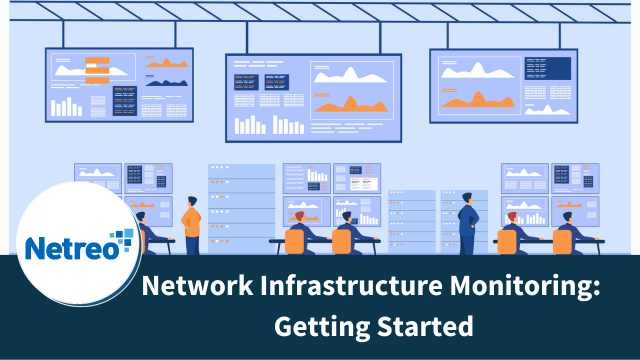
The rapid evolution of technology profoundly impacts network infrastructure monitoring. New technologies such as containerization, microservices, and serverless computing introduce complexities that require monitoring solutions to adapt. The shift to DevOps practices, where development and operations teams collaborate closely, emphasizes the need for real-time monitoring and feedback loops to ensure continuous integration and delivery of applications and services. The importance of a reliable network connection cannot be overstated, especially in a hyper-connected world. As a result, network infrastructure monitoring should be at the core of every enterprise. Imagine a situation where you’re working on a critical project only to be blindsided by a sudden network outage. It’s frustrating, disruptive and can derail your entire team.
In this post, we’ll explore why and how to get started with network infrastructure monitoring. We’ll also cover the primary benefits, key features, tools and best practices that DevOps professionals can leverage for their enterprise.
Network infrastructure monitoring is a set of tools and practices for collecting, monitoring, and analyzing data from devices and systems in a network. The process involves using specialized tools to collect data, like device uptime and availability, network traffic and bandwidth usage resource usage.
The IT management and development landscape benefits a lot from network infrastructure monitoring. For instance, operations teams use monitoring tools to ensure network capacity always serves the needs of internal and external users. Developers use monitoring to ensure their applications function optimally within the network environment. On the other hand, the security team can identify and respond to threats in the network. Network infrastructure monitoring is essential for business continuity, preventing productivity and customer satisfaction disruptions.
You should note that monitoring requirements can vary significantly, depending on the type of infrastructure in use. On-premises, cloud-based and hybrid infrastructures have unique monitoring challenges and considerations. For example, on-premises monitoring might involve physical hardware and local network configurations, while cloud-based monitoring relies on cloud service providers’ tools and APIs. Hybrid infrastructures require monitoring both on premises and in the cloud.

Network infrastructure monitoring significantly benefits organizations of all sizes across various industries.
Network infrastructure monitoring involves several components and features to help organizations maintain network reliability, performance, and security. Here are some key features commonly found in network infrastructure monitoring solutions:
Performance monitoring: Tracks various performance metrics, such as bandwidth usage, latency, packet loss and throughput. Providing real-time visibility into network performance helps identify bottlenecks or issues affecting the user experience.
Availability monitoring: Ensures network services, servers, and devices are accessible and operational. Availability monitoring detects and alerts administrators to downtime or disruptions.
Security monitoring: Monitors for security threats, unauthorized access attempts, malware, and vulnerabilities within the network. Security monitoring includes intrusion detection systems (IDS) and intrusion prevention systems (IPS) to safeguard against cyberattacks.
Resource utilization: Monitors the utilization of network resources, including CPU usage, memory, and disk space on network devices and servers. This helps prevent resource exhaustion and supports proper resource allocation and optimization.
Traffic analysis: Analyzing network traffic patterns helps to identify unusual or suspicious activities. Traffic analysis includes deep packet inspection (DPI) and traffic flow analysis to detect security breaches and network misuse.
Event logging: Maintains detailed logs of network events and activities. Event logs serve as a historical record for troubleshooting network issues, auditing network activity and ensuring compliance with regulatory requirements.
Alerting and notifications: Configures alerts and notifications to inform network administrators or IT teams when predefined thresholds or conditions are met or exceeded. Alerts ensure that critical issues are addressed promptly.
Capacity planning: Helps organizations plan for future network growth by analyzing resource utilization trends and provides insights into when additional network capacity or hardware upgrades may be needed.
Reporting and dashboards: Generates reports and offers customizable dashboards to visualize network performance data. Reports and dashboards facilitate data-driven decision-making and provide insights into network health.

Effective network infrastructure monitoring requires following best practices to ensure your network remains reliable, secure and high-performing. Here are some best practices for network infrastructure monitoring:
Network infrastructure monitoring is critical for maintaining a reliable, secure, and efficient network. Continuously observing and assessing your organization’s network helps IT teams ensure optimal performance, availability and security. By implementing network infrastructure monitoring, you can protect your systems and devices from cyberattacks, safeguarding your network’s security, efficiency and reliability. Don’t wait for issues to disrupt your business. Take proactive steps to monitor and maintain your digital backbone today with Netreo.
This post was written by Mercy Kibet. Mercy is a full-stack developer with a knack for learning and writing about new and intriguing tech stacks.